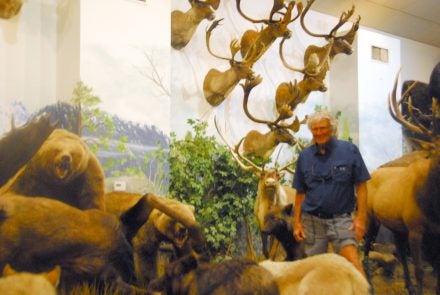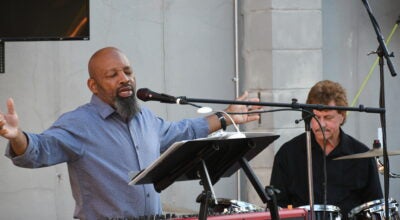Behind the Big 5
Published 3:30 pm Friday, January 12, 2018
Deer antlers, elephant heads and giraffe necks adorn the walls of the Tyson museum. Visitors believe they have seen all of James Tyson’s conquests and know the history behind every display, but only Tyson can explain the truth behind these amazing hunting journeys.
Spending 21 days hunting a hippopotamus to obtain the last of the “Big five” might be enough for some, but not for Tyson. Tyson started hunting in 1990, and has since been to Africa 12 times, all over the United States, Mongolia, China, Russia, Canada, New Zealand, Australia and Banks Island.
Although Tyson said all of these places “are his favorite,” some of best hunts were in Africa. He said the hunt was not the best because of what he was hunting necessarily, but because of the travel.
“You don’t realize what a great country we live in, until you see the poverty over there,” Tyson said.
For that reason, Tyson believes in spending his money over there.
“You see the needs, so the money you spend over there is humbling. You know a portion of it is going to their necessities.”
Because Tyson realizes the needs in other countries, all the meat from the animals is preserved for human consumption or for contained animals. It is all paid for and nothing is thrown away. One of Tyson’s memorable moments in Africa was hunting an elephant at night by foot. In the distance he could hear people beating on their drums for their ritual. The people knew Tyson was there to hunt down an elephant and they were excited. Tyson found out the people hate elephants, because they stomp on the crops that are in close proximity to the river.
“Ladies spend their whole summer with their crop. They try to grow peanuts, but they grow a lot of cotton,” Tyson said. “Every bur is picked; not a single dot is left. It is all picked by hand.”
Tyson’s great hunting adventures didn’t stop in Africa. In New Zealand, Tyson boarded a helicopter to go thousands of feet up a mountain in order to hunt tahr and shami. After landing, Tyson had to make sure his foot was not caught in the strut so he wouldn’t go flying. After adjusting himself, Tyson’s professional hunter helped him tie up the animals under the helicopter and they boarded again to go back down with their newest hunt.
While it seems Tyson has been most everywhere, he said he has never been to the upper part of the Equator in Africa. The reason behind this is because most of Sudan has been shot out and Kenya is closing off most of its hunting due to endangered species. Mozambique has little room to hunt lions anymore, so Tyson is not sure he will ever make it up there.
Sudan and Kenya are not the only places to worry about being shot out. Eastern Canada and North America now only allow one caribou per hunt, and people aren’t allowed to hunt them or shoot them without a permit.
Tyson said the reason behind this is wolves. “Wolves are the most dangerous animals in the lower 48. They are devastating our wildlife because of their size and the fact they hunt in a pack.”
Wolves typically consume one deer a week, Tyson said. For this reason, it was a very controversial decision to bring wolves back into the states and let them breed in Yellowstone.
Although the United States considers some things endangered, other countries such as Africa don’t, which allows for Tyson to hunt elsewhere. Tyson has an ostrich he shot in Namibia along with eggs that were found there. Tyson also has two horns of ivory, but explained every piece of ivory has to have its own serial number or the DNR can come and revoke it.
Tyson doesn’t have to be far from home to find excitement in his hunting. Tyson raised an elk on his high-fenced farm for seven years. It became one of the largest he has ever shot. “I get the same amount of adrenaline from obtaining a large animal as I do obtaining a small animal,” Tyson said.
Although Tyson has obtained 95 percent of the animals himself, his wife and two boys have helped make the museum what it is today. He created the museum mostly for children because he said he enjoys kids coming to the museum.
In order to show the kids about the animals he obtained, he went into great detail to exhibit the magnificence of animals in true life form. To see the magnificence for yourself and view Tyson’s animal collection you can visit the Tyson Steel Wildlife Museum at 361 Doerun Rd. in Doerun, Georgia.






